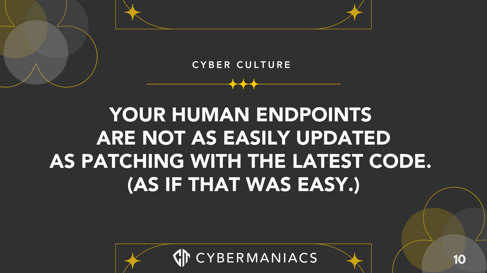Why Cyber Awareness Programs Get Stuck—and How to Break Through
Cyber awareness programs have long been recognized as a critical part of any organization’s defense strategy, yet many remain stuck in...
Apathy is the Alarm Bell We’re Ignoring
When we talk about human risk, we often focus on mistakes, attackers, or poorly followed procedures. But there’s a more insidious threat growing quietly across every industry: employee disengagement.
Not just low morale. Not burnout. We’re talking about the slow, creeping erosion of connection—when people stop feeling invested in their company, their work, or their role in protecting either.
And that? That’s when real cyber risk, data loss, and governance failure start to take root—quietly undermining your cybersecurity awareness programs, AI risk management posture, and overall compliance strategy.
When employees don’t care, they stop noticing. They stop questioning. They stop reporting.
Disengaged employees are less likely to:
Challenge suspicious emails or behaviors
Follow security protocols under pressure
Participate in cybersecurity awareness training meaningfully
Raise concerns when something feels off
Instead, they click, skim, bypass, ignore. Not out of malice—but because the mental and emotional connection to digital risk, responsibility, and consequence has faded.
This isn’t about attitude. It’s about signals. Apathy is data. And it’s often the final warning before something goes wrong—whether it’s a data protection failure, governance gap, or compliance breakdown.

Cyber culture plays a massive role in how people respond to digital risk. And connection to culture—your mission, your values, your standards—impacts behavior at every layer.
Ask yourself:
Do your employees feel ownership of information security?
Are they intrinsically motivated to protect your data and systems?
Or are they clicking through annual compliance training just to check the box?
Disconnection doesn’t happen overnight. It grows slowly when people feel unseen, unheard, or uninspired. When cybersecurity is positioned as a burden, not a shared responsibility. When the relationship between human risk and business purpose isn’t made clear.
Security teams often track behaviors, not beliefs. But signs of disengagement and human factors risk show up long before someone skips training or clicks a bad link.
Look for:
Consistent low engagement on cybersecurity surveys or feedback loops
Declining participation in voluntary digital risk training or security culture events
Silence in channels where compliance or cyber awareness is discussed
Managers expressing that teams “just don’t care” anymore
To reverse the trend, don’t start with punishment—start with curiosity:
What’s missing from the message or the experience?
Where have we made cybersecurity feel irrelevant or unimportant?
How can we reconnect teams to the bigger picture of human risk management (HRM)?
You can’t force people to care. But you can create the conditions for care to grow:
Make Risk Personal
Use real-world stories, scenarios, and relevance to show how digital choices impact people, data protection, and business outcomes
Involve, Don’t Just Inform
Invite teams to co-create solutions, share stories, and shape cyber awareness messaging
Celebrate Curiosity and Contribution
Highlight when people ask questions, report concerns, or improve governance and compliance processes
Embed Purpose into Protection
Show how cybersecurity and data loss prevention protect your mission, your customers, and each other
Apathy isn’t a flaw in the person. It’s a signal from the system—an early indicator of broader failures in security culture, awareness, and digital risk communication.
If your teams are checking out, the solution isn’t louder training. It’s deeper alignment with the principles of human risk management.
Connection, culture, curiosity—these aren’t soft concepts. They’re strategic assets that strengthen governance, compliance, and operational resilience.
The more your people care, the stronger your defense becomes. And in today’s AI-driven, fast-moving world, that may be the most important investment you can make.
At Cybermaniacs, we help organizations uncover what traditional programs often miss. Our GASS scores and safety culture indicators go beyond surface metrics to diagnose the hidden dimensions of human risk—before they become systemic failures. We build assessments, managed services, and engagement strategies that truly resonate.
If you're looking to move beyond compliance and ignite meaningful behavior change, we’re here to help. Reach out today to explore how human risk management can become your strongest line of defense.

Cyber awareness programs have long been recognized as a critical part of any organization’s defense strategy, yet many remain stuck in...
4 min read

Culture Isn’t a Vibe—It’s Infrastructure
5 min read

Cybersecurity Awareness Month—love it or hate it, there's no denying it's like the Marmite of corporate initiatives. Every October, organizations...
6 min read
Subscribe to our newsletters for the latest news and insights.
Stay updated with best practices to enhance your workforce.
Get the latest on strategic risk for Executives and Managers.
